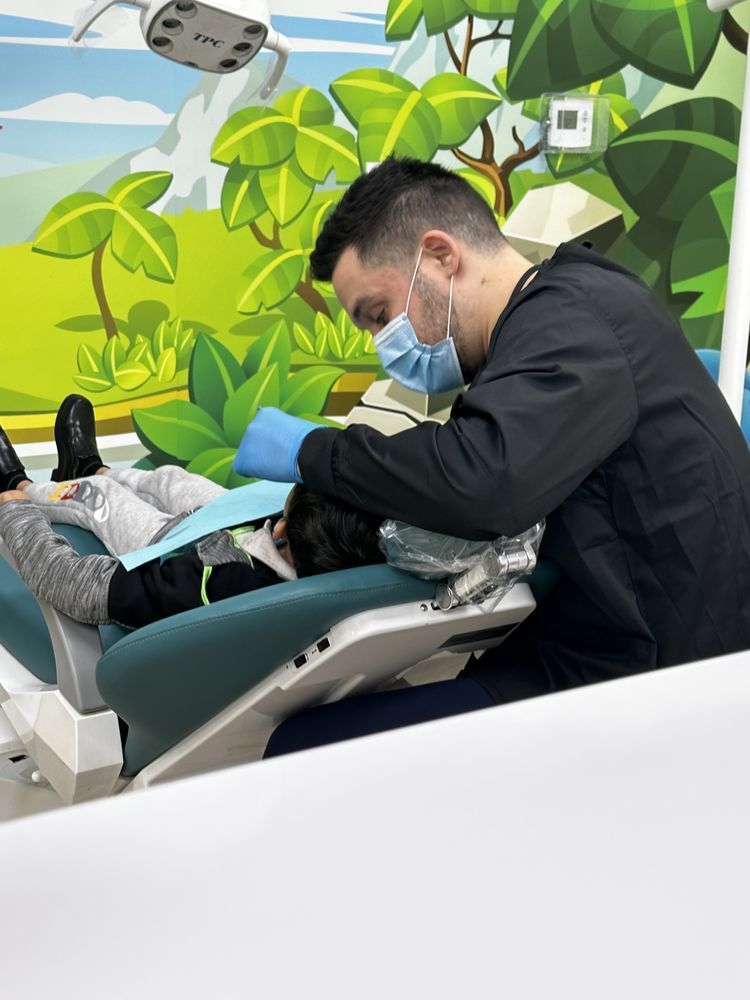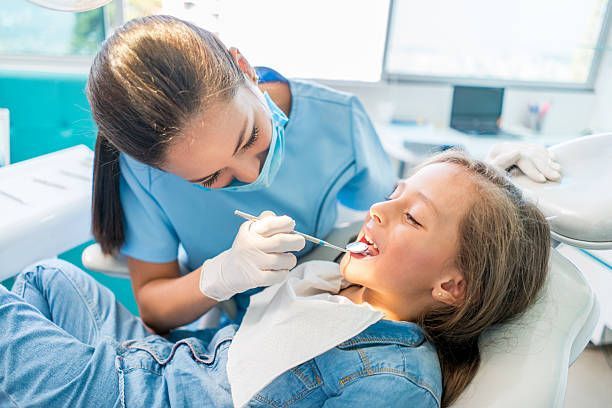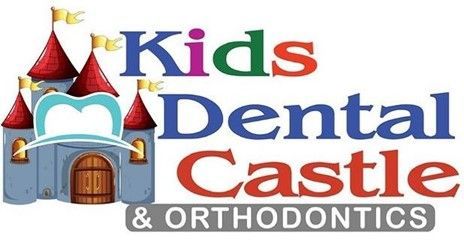Pediatric Dentistry in Pomona, CA – Gentle, Kid-Friendly Care
Pediatric Dental Exams
Regular dental appointments are essential for the health of your child's smile. We recommend you bring your child in for a dental exam with our doctors every six months starting from the eruption of their first tooth.
Why dental exams are so important for children:
In the United States, tooth decay is the most common chronic disease in young children - completely preventable! The earlier you start dental appointments with your children, the better protected their mouths will stay throughout their lives. Early childhood Dental exams can help prevent cavities from forming, diagnose genetic conditions, and ensure your child's teeth allow them to speak and eat properly.
What happens at a pediatric dental exam?
What happens at a pediatric dental exam?
Dr. Javan will evaluate your child's smile and oral hygiene habits at your child's pediatric dental exam. This will help him to catch potential issues early on and create a plan for protecting your child's oral health.
After taking dental records, Dr. Javan will give you an assessment of your child's tooth decay risks and can help you and your child learn ways to improve their oral health.
Then, we will gently clean your child's teeth and give them a fluoride treatment to help protect against cavities. If your child already has cavities, Dr. Javan can also diagnose and treat them during dental appointments.
Gentle treatment for nervous patients:
Many kids are anxious about visiting the dentist, but at Kids Dental Castle, they don't have to be! We make oral health a fun and positive experience and have extensive experience setting nervous minds at ease.
We even have a selection of sedation options available if it will help your child feel more comfortable during their appointment with us.
Book your child's dental exam today.
Set your child's smile up for success with a gentle dental appointment at Kids Dental Castle.

Preventive care should start early.
Your child's primary or "baby" teeth will begin to emerge between the ages of six to 12 months and continue to appear until about age 3. Your son or daughter's gums may feel tender and sore during this time. To help alleviate this discomfort, we recommend you soothe the gums by rubbing a clean finger or a cool, wet cloth. You may also choose to make use of a teething ring.
Your youngster's primary teeth are shed at various times throughout childhood. Permanent teeth begin erupting at age 6, and continue until age 13, followed by wisdom teeth in the late teens or until 21. Adults have 28 permanent teeth (32, including wisdom teeth).
Adopting Healthy Oral Hygiene Habits
You should start brushing as soon as the first tooth arrives. As your child's teeth erupt, examine them every two weeks, looking for lines and discoloration that may be caused by decay. Remember that sugary foods and liquids can attack a new tooth, so ensure your child brushes after feeding or eating. We recommend brushing two times a day for optimal oral hygiene.
Brushing can be fun; your child should brush as soon as the first tooth arrives. When a baby's tooth erupts, parents should brush the tooth with a soft-bristled toothbrush and a pea-sized amount of toothpaste. For children younger than two, do not use fluoride toothpaste unless advised to do so by your dentist or other healthcare professional. We suggest reviewing proper toothbrushing procedures with your child.
Flossing is also a part of good oral hygiene habits, and your dentist will discuss with you the right time to start flossing your child's teeth. An adult should floss the teeth until the child can do a good job on their own, often by age 10. If you notice signs of decay, contact your dentist immediately.
Preventing Tooth Decay With Regular Checkups
Tooth decay is caused by sugars that turn into an acid, which can break down the teeth. Children are at high risk for tooth decay for a simple reason: many children and adolescents do not practice regular, good oral hygiene habits. Proper brushing and flossing routines and regular dental visits help prevent tooth decay.
Your child should visit the dentist every six months for regular dental cleanings and checkups. We recommend fluoride treatments twice a year and cleanings to keep teeth their strongest. Tooth sealants are also recommended because they "seal" the deep grooves in your child's teeth, preventing decay from forming in these hard-to-reach areas. Sealants last for several years but will be monitored at your child's regular checkups.
Regular exams are essential to maintaining your child's oral health and are recommended every six months.
During your youngster's regular exam, we will:
Examine the soft and hard tissue, check for cavities, and the health of the gums and surrounding tissue
- Thoroughly clean the teeth
- Fluoride treatment
- X-rays if needed
Evaluate the eruption of teeth and bite and, if needed, recommend an orthodontic evaluation at the appropriate time
Review home care, brushing, and flossing



Fluoride Treatment
Fluoride helps prevent tooth decay by making the tooth more resistant to acid attacks from plaque bacteria and sugars in the mouth. A fluoride treatment is done immediately after the teeth have been cleaned and polished and takes just a few minutes. There are no eating or drinking restrictions after the fluoride treatment.
Sealants
Sometimes brushing is not enough, especially regarding those hard-to-reach spots in your child's mouth. It is difficult for a toothbrush to get between the small cracks and grooves on your little one's teeth. If left alone, those tiny areas can develop tooth decay. Sealants give your son or daughter's teeth extra protection against decay and help prevent cavities.
Dental sealants are made of plastic resin that bonds and hardens in the deep grooves in the chewing surface of the tooth. When a tooth is sealed, the tiny grooves become smooth and are less likely to harbor plaque. With sealants, brushing your child's teeth becomes easier and more effective against tooth decay.
It is more common to seal permanent teeth rather than baby teeth, but every patient has unique needs, and our dentists will recommend sealants on a case-by-case basis.
Sealants last several years, but it is fairly common to see adults with sealants still intact from childhood. Once sealants are placed, we will inspect them at each regular checkup.
It is still possible to get a cavity on a sealed tooth, such as decay between the teeth where sealants cannot reach. A dental sealant only provides protection when fully intact, so if your child's sealants come off, let us know and schedule an appointment for your little one's teeth to be re-sealed.
Mouthguards
Whether your child wears braces or not, protecting his or her smile while playing sports is essential. Mouthguards help protect the teeth and gums from injury. If your child participates in any kind of full-contact sport, the American Academy of Pediatric Dentistry recommends wearing a mouthguard.
Choosing the right mouthguard is essential. There are three basic mouthguards: the pre-made mouthguard, the "boil-and-bite" fitted mouthguard, and a custom-made mouthguard from a dentist. When you choose a mouthguard, be sure to pick one that is tear-resistant, comfortable, well-fitted for your child's mouth, easy to keep clean, and does not prevent your child from breathing properly.
We can show your little athlete how to wear a mouthguard properly and choose the right mouthguard to protect his or her smile.
Nightguards
If your child often wakes up with jaw pain, tension, or headaches, or you see your youngster clenching or grinding his or her teeth, your child may have a common condition called "bruxism." Many people do not know they grind their teeth because it often occurs during sleep. If not corrected, bruxism can lead to broken teeth, cracked teeth, or excessive tooth wear.
An easy, non-invasive treatment for bruxism is normally done when the patient is a teenager. Nightguards are an easy way to prevent the wear and damage that teeth-grinding causes over time. Custom-made by our team from acrylic molded to fit the teeth, a nightguard is inserted over the top or bottom arch and prevents contact with the opposing teeth.
Visiting our office every six months gives you the opportunity to ask the doctor any questions you may have about your child's oral health. We value your time and try to schedule siblings together to minimize your time in the office. At the end of the appointment, we will schedule the following six-month "recall appointment."
Home Care for Your Baby
Congratulations on the arrival of your baby! Are you prepared for the arrival of your infant's first tooth? Follow these guidelines, and your son or daughter will be on the way to a lifetime of healthy smiles!
CARING FOR GUMS
Even before your little one's first tooth appears, the gums can benefit from your careful attention. After breast- or bottle-feeding, wrap one finger with a clean, damp washcloth or gauze and gently rub it across your baby's gum tissue. This practice clears your little one's mouth of any food fragments and begins building good daily oral care habits.
Baby's First Tooth
When that first tooth makes an entrance, it's time to upgrade to a baby toothbrush. There are usually two options: a long-handled toothbrush that you and your baby can hold at the same time and a finger-puppet-like brush that fits over the tip of your pointer finger. In each case, the bristles are soft and few.
At this stage, toothpaste isn't necessary; just dip the brush in water before brushing. If your little one doesn't react well to the introduction of a toothbrush, don't give up. Switch back to a damp washcloth for a few months, then try the toothbrush again. During the teething process, your youngster will want to chew on just about anything. A baby toothbrush with a teether can become a favorite toy during this period.
BRUSHING WITH TOOTHPASTE
When a few more teeth appear, you can start using toothpaste with your child's brush. At this stage, use only a tiny amount of fluoridated toothpaste (the size of a grain of rice). From the beginning, have your little one practice spitting the toothpaste out after brushing, which should not be swallowed at any age.
AVOIDING CAVITIES
Don't give your baby any sort of sweetened liquids such as flavored drinks or soda. Even the sugars present in fruit juice, formula, and milk (this goes for breast milk as well) can cause decay, so regular teeth and gum cleaning is vital.
Also, make sure your baby never goes to bed with a bottle: sugary liquids in prolonged contact with teeth are a guarantee for early childhood decay, also called baby-bottle caries.
Setting a Good Example
As part of the natural learning process, little ones are expert mimics, and you can take advantage of this talent. Brush and floss daily while your child is watching, and he or she will intuit at an early age the importance of your good habits.
As soon as your child shows interest, offer a toothbrush of his or her own and encourage your toddler to "brush" with you. (You'll find toothbrushes with chunky, short handles that are easy to grip.) Most children don't have the dexterity to thoroughly clean their teeth until they're about six or seven, so you'll have to do that part of the job.
Try different tactics to make brushing fun: flavored toothpaste, a toothbrush with a favorite character, or singing songs about brushing. The primary goal is to instill healthy oral habits early to prepare your child for a lifetime of healthy, cavity-free teeth!
